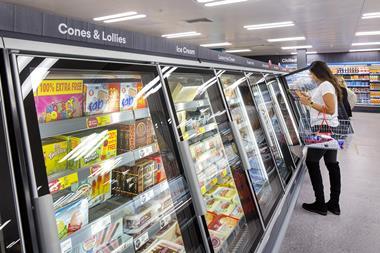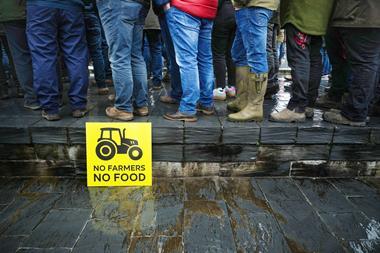The latest step in Morrisons' continued expansion from its heartland has brought it to the grocery battleground of Enfield.
Morrisons' recently opened third store inside the M25 brings it into the heartland of the big two. In choosing a location just 15 minutes' drive away from Tesco's Cheshunt headquarters, this latest move looks to be among the boldest by the Bradford-based retailer.
Enfield is no stranger to intense grocery competition. Safeway was squeezed out of the town and vacated the site now operated by Morrisons. With two Tesco stores and a Sainsbury within three-quarters of a mile, it is not surprising Safeway found life tough. So why would Morrisons want to trade from Enfield?
CACI's analysis of the likely catchment for the new store reveals it has chosen wisely. It has a remarkably good fit to the profile of the typical' Morrisons shopper.
Indeed CACI's analysis reveals the Morrisons brand has the best fit to the store's catchment of any of Britain's top 14 multiples. Where Safeway may have erred was in choosing a site whose catchment demographics did not match its core customers. The profile of the Safeway shopper ranks 11th out of the same list of fascias.
The chart below reveals how well the profile of the Enfield store fits with that of Morrisons' Acorn profile, in contrast to that of Safeway.
If Morrisons is going to succeed in Enfield it must capitalise on the strong appeal that it has among the value-conscious skilled workers, home owning areas' and council estate residents, better-off homes' customers that are highly represented in Enfield. These are groups where Safeway appears to lack a strong proposition.
Morrisons' weakness in Enfield could be its lack of appeal to the white collar workers, better off multi-ethnic' customers, who are highly represented in the catchment. Both Sainsbury and Tesco have a greater appeal to this group and Morrisons would be well advised to consider its offer to these people.
With so few stores in the south-east, Morrisons need not concern itself with cannibalisation at this stage, and little impact is expected at its Highams Park store. Improved brand awareness in the local area may gradually serve to boost performance elsewhere in the M25.
So should Tesco and Sainsbury be concerned about the new neighbours? CACI's early indications are that Tesco could lose £200,000 a week across its three most local stores, and Sainsbury £175,000.
{{INSIGHT }}
Morrisons' recently opened third store inside the M25 brings it into the heartland of the big two. In choosing a location just 15 minutes' drive away from Tesco's Cheshunt headquarters, this latest move looks to be among the boldest by the Bradford-based retailer.
Enfield is no stranger to intense grocery competition. Safeway was squeezed out of the town and vacated the site now operated by Morrisons. With two Tesco stores and a Sainsbury within three-quarters of a mile, it is not surprising Safeway found life tough. So why would Morrisons want to trade from Enfield?
CACI's analysis of the likely catchment for the new store reveals it has chosen wisely. It has a remarkably good fit to the profile of the typical' Morrisons shopper.
Indeed CACI's analysis reveals the Morrisons brand has the best fit to the store's catchment of any of Britain's top 14 multiples. Where Safeway may have erred was in choosing a site whose catchment demographics did not match its core customers. The profile of the Safeway shopper ranks 11th out of the same list of fascias.
The chart below reveals how well the profile of the Enfield store fits with that of Morrisons' Acorn profile, in contrast to that of Safeway.
If Morrisons is going to succeed in Enfield it must capitalise on the strong appeal that it has among the value-conscious skilled workers, home owning areas' and council estate residents, better-off homes' customers that are highly represented in Enfield. These are groups where Safeway appears to lack a strong proposition.
Morrisons' weakness in Enfield could be its lack of appeal to the white collar workers, better off multi-ethnic' customers, who are highly represented in the catchment. Both Sainsbury and Tesco have a greater appeal to this group and Morrisons would be well advised to consider its offer to these people.
With so few stores in the south-east, Morrisons need not concern itself with cannibalisation at this stage, and little impact is expected at its Highams Park store. Improved brand awareness in the local area may gradually serve to boost performance elsewhere in the M25.
So should Tesco and Sainsbury be concerned about the new neighbours? CACI's early indications are that Tesco could lose £200,000 a week across its three most local stores, and Sainsbury £175,000.
{{INSIGHT }}


















No comments yet